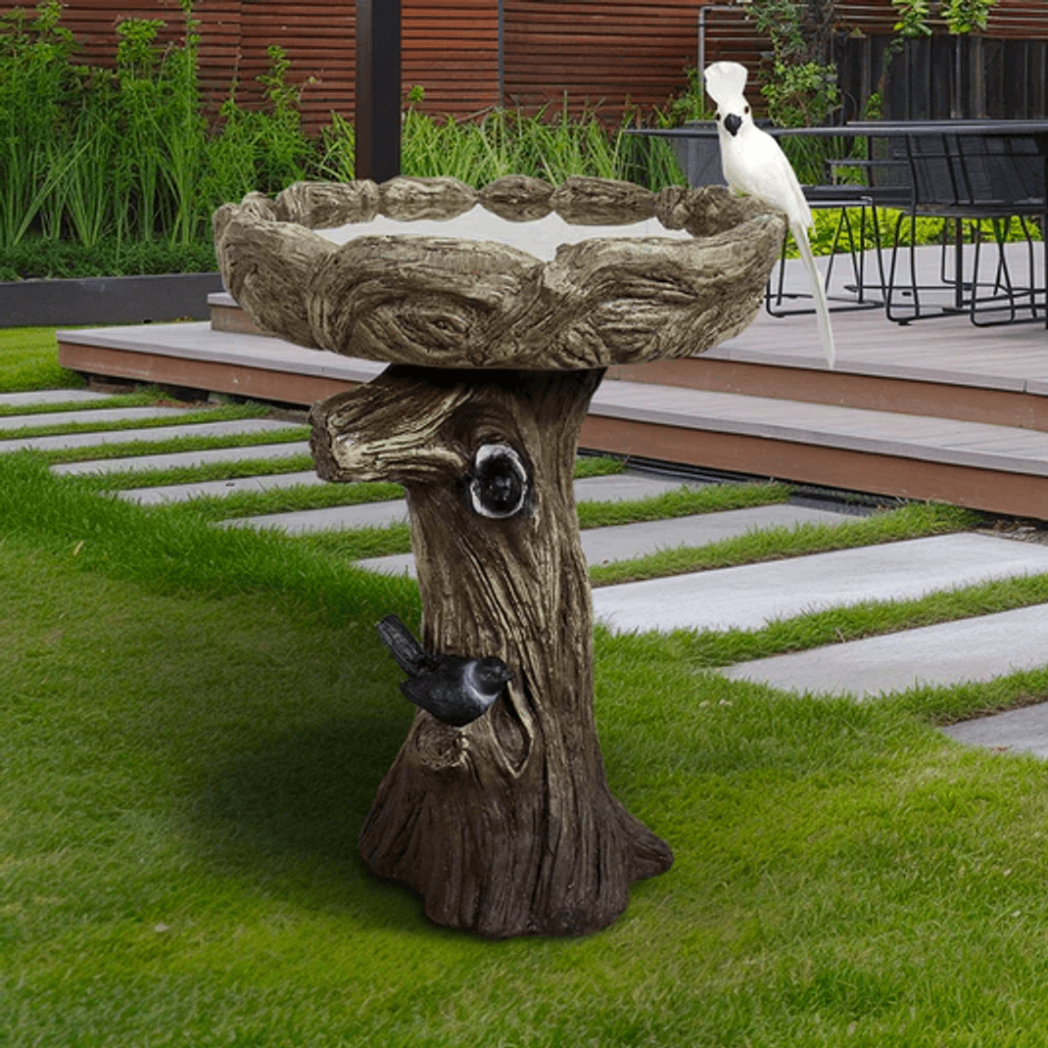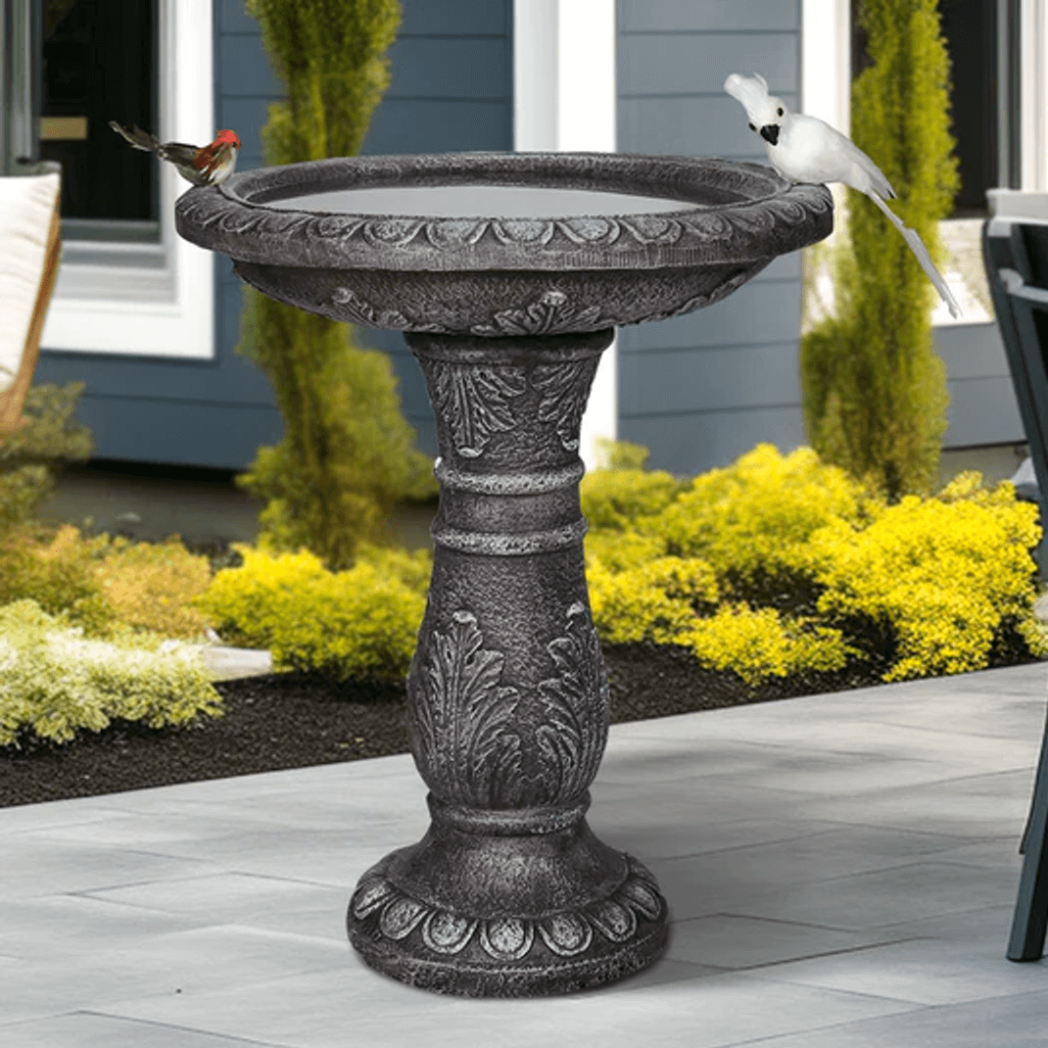7 Things You Should Know about Bird Bath
Introduction
Bird baths are more than just a garden ornament; they are a vital resource for attracting and supporting local bird populations. Whether you’re a seasoned birdwatcher or just starting to create a bird-friendly environment, there are key aspects you need to know to make your bird bath as effective and appealing as possible. This article explores seven essential things you should know about bird baths, from optimal depth and placement to maintenance and what to put in the water. Read on to discover how to make your bird bath a haven for your feathered friends.
How deep should a bird bath be
When setting up a bird bath, choosing the right depth is key to attracting a variety of birds. A depth of 1 to 3 inches works well: around 1 inch is ideal for small birds like sparrows and finches, while slightly deeper areas up to 2-3 inches cater to larger birds like robins and jays. If your bird bath is too deep, simply adding rocks or pebbles can create the shallower zones that make birds feel comfortable.
Best place to put a bird bath
Finding the perfect spot for your bird bath enhances both its functionality and your bird-watching enjoyment. Avoid placing it directly under trees or near bird feeders to prevent contamination from leaves and seeds. This location ensures easy access for refilling and maintenance. Ideally, place the bath close to bushes or shrubs where birds can quickly find shelter if they sense danger.
Should a bird bath be in the sun or shade
Positioning your bird bath to maximize both sun and shade is essential for bird health and bath maintenance. Partial sunlight helps keep the water warm and inviting, which is particularly beneficial in cooler climates. In contrast, for warmer regions, placing the bird bath in dappled shade prevents the water from overheating and reduces algae growth. This balance also minimizes bacterial growth and evaporation, ensuring the water remains fresh. By integrating your bird bath into a spot that offers a blend of sun and shade, you create a comfortable and appealing environment for your feathered visitors.
How to attract birds to bird bath
To make your bird bath more inviting for birds, choose designs that blend seamlessly with the natural environment. Opt for bird baths in earthy tones or natural stone finishes that resemble the colors found in nature, such as greens, browns, and grays. This natural appearance makes the bird bath more appealing to birds and helps it integrate into your garden.Additionally, position the bird bath among plants and foliage to create a more familiar and safe environment for the birds. Different bird bath designs cater to various bird species, so consider options that fit your garden’s aesthetic while providing a comfortable space for birds.

Water Fountain online23.8 “H-Simulated Reinforced Concrete Bird Ponds with bird

Water Fountain online24.4″H-Fibre Reinforced Concrete Garden Birdbaths with Pede…
What to put in bird bath water
Keeping your bird bath water beneficial for birds involves adding simple, natural elements. Place a few small rocks or pebbles in the water to provide perching spots for birds. This helps them drink without having to wade into the water fully. Consider adding a pinch of gravel to improve traction at the bottom, making it easier for birds to stand and bathe. For an extra touch, adding a few drops of apple cider vinegar can help maintain water freshness by reducing algae growth, but be careful not to use too much.
How to keep bird bath clean
Keeping your bird bath clean not only provides a healthy environment for birds but also enhances the beauty of your garden. Daily water changes are crucial to prevent dirt accumulation and mosquito breeding, ensuring that birds always have fresh water. Placing the bird bath in a shaded area helps reduce evaporation and inhibit algae growth. Planting around the bath can offer natural shade and increase the garden’s appeal.
A weekly scrub with a solution of nine parts water to one part vinegar effectively removes dirt and algae while being safe for birds. To further prevent algae growth, consider placing a few pre-1982 copper coins at the bottom of the bath, utilizing copper’s natural algaecidal properties.
Additionally, avoid positioning the bird bath directly under bird feeders or trees to minimize contamination from bird droppings and seeds. By following these simple yet effective maintenance steps, your bird bath will remain a clean and inviting spot for birds, adding vibrancy to your garden.
Conclusion
Creating and maintaining a bird bath that meets the needs of various bird species can transform your garden into a lively and attractive space for birds. By understanding the ideal depth, best placement, and maintenance practices, you ensure that your bird bath remains a fresh and inviting resource. For more detailed information on selecting and maintaining your bird bath, visit and browse our range of specially designed bird baths to enhance your garden’s appeal.
